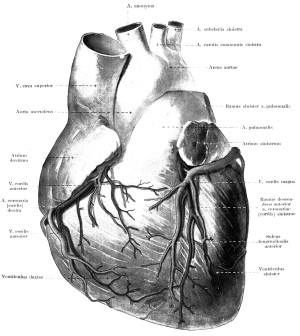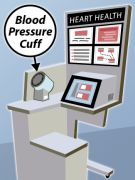- Skip Storing This Everyday Product in the Fridge Door
- Green Tea + B3 Pairing May Boost Brain Health
- Navigating Your Midlife Crisis: Embracing New Possibilities
- City Raccoons Showing Signs of Domestication
- Mapping the Exposome: Science Broadens Focus to Environmental Disease Triggers
- One Week Less on Social Media Linked to Better Mental Health
- Your Brain Changes in Stages as You Age, Study Finds
- Some Suicide Victims Show No Typical Warning Signs, Study Finds
- ByHeart Formula Faces Lawsuits After Babies Sickened With Botulism
- Switch to Vegan Diet Could Cut Your Greenhouse Gas Emissions in Half
Blood Pressure Kiosks May Not Always Give Accurate Readings


If you decide to quickly check your blood pressure while you’re out shopping this summer, know that your reading might not be accurate if the cuff is too small or too large for your arm, the U.S. Food and Drug Administration warns.
These blood-pressure kiosks are available in many public places, such as pharmacies, grocery and retail stores, gyms, airports and hair salons. While they’re convenient, they may not be right for you.
“They are easily accessible and easy to use. But it’s misleading to think that the devices are appropriate for everybody. They are not one-size-fits-all,” Luke Herbertson, a biomedical engineer at the FDA, said in an agency news release.
A too-small cuff will give you a higher blood pressure reading, while a too-large cuff may give you an inaccurate low blood pressure result, or may not work at all, according to the news release.
Having your blood pressure checked is important because it can detect high blood pressure (or “hypertension”), which increases the risk of stroke, heart attack, heart failure, kidney failure and death. In many people, the only way to detect high blood pressure is to get a blood pressure reading, the FDA said.
Health care professionals can choose from different sizes of blood pressure cuffs to get an accurate reading. For example, a large man may require an extra-large adult cuff, while a toddler may require an extra-small cuff.
Most kiosks have just one fixed-size cuff and the reading is only reliable if the user’s arm fits that cuff size.
“Different kiosks have different cuff sizes that will fit different people — so it’s important to know the circumference of your upper arm because not all devices are alike,” Stephen Browning, a biomedical engineer at FDA, said in the news release.
“Many people will be outside the arm-size range for a particular kiosk, and the information from that kiosk won’t be reliable for them,” Browning added.
Other factors can influence blood pressure readings taken at public kiosks, including not sitting properly or not placing the cuff on the arm properly.
If you do get what appears to be an alarming blood pressure reading at a kiosk, don’t overreact.
“Hypertension isn’t diagnosed solely based on one reading. Inaccurate blood pressure measurements can lead to the misdiagnosis of hypertension or hypotension (low blood pressure), and people who need medical care might not seek it because they are misled by those inaccurate readings,” Browning said.
Herbertson offered this advice: “Next time you see your doctor, get his or her opinion about whether blood pressure kiosks are right for you and if so, learn to use them properly — using the right size cuff so you can get accurate readings.”
More information
The U.S. National Library of Medicine has more about blood pressure measurement.
Source: HealthDay
Copyright © 2025 HealthDay. All rights reserved.










